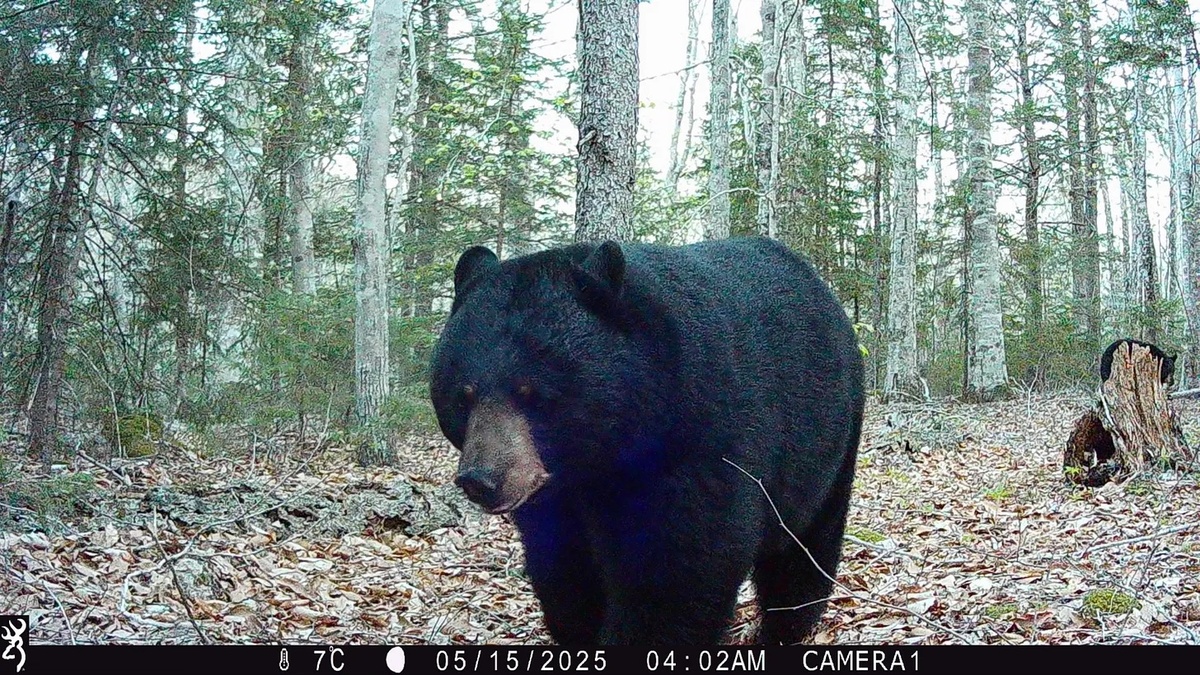Acadia National Park representatives spoke to the League of Towns on Tuesday about how and if they should manage the black bear population on Mount Desert Island, but right now, it’s really more about managing and educating people.
While the black bears have likely always been on Mount Desert Island, there’s been a few sightings around the island and those sightings have inspired multiple social media posts and discussion.
“We’ve seen them on wildlife cameras. There’s a place by the park’s dumpsters; we’ve seen them there, too,” Acadia National Park Management Assistant John Kelly said.
“So, John wants to manage the bears,” Trenton Select Board Chair Fred Ehrlenbach said good-naturedly before the meeting of the group, which is a collaboration of staff and officials from Bar Harbor, Cranberry Isles, Ellsworth, Lamoine, Mount Desert, Southwest Harbor, Swans Island, Tremont, Trenton and Acadia National Park.
“Before they manage us,” Kelly responded.
Later Kelly said, “As far as the park goes, we’re happy to see bears in the habitat. That’s kind of exciting. It’s nice to see, but we want to keep that distance and keep the bears wild and keep people safe. There’s sort of this growing issue right now, on the island, at least for the summer. We’re looking to step up communications and manage our waste.”
Bears have been spotted at the head of the island and Duck Brook Trail. In May, a bear reportedly went after goats and destroyed fencing and rabbit hutches.
Bears are nothing new on Mount Desert Island, but the sightings this year seem to be coming quickly and all over Bar Harbor, Town Hill, Somesville and Acadia National Park. There was also a bear at Jordan Pond that got into the trash.
Since mid-June, people on social media have reported seeing a bear on the Kane Path, Dorr South Ridge Trail, Bald Peak Trail and Cadillac Mountain.
Stephen Dunham, a regional wildlife biologist with the Maine Department of Inland Fisheries & Wildlife, said last week, “This is a good chance to remind the folks that live on MDI that they should be following the recommendations we make every spring and to avoid putting out bird feeders from April 1 to November 1 and to make sure their trash, grills, and other potential food sources are secure.”
The park agrees and is working to notify campers at Seawall and Blackwoods about stowing food away from picnic tables and tents.
“We’re doing that communication,” Kelly said. “We are communicating with our park staff on that same level.”
The park is also looking to eventually have bear-proof boxes for people to store food on site as well as bear proofing dumpsters and trash receptacles.
The goal is to keep bears out of human waste as much as possible.
“Bird feeders and domestic eating of animals is a little trickier,” Kelly said. “The bear we encountered was at the Jordan Pond House.”
The park also hopes to create a reporting system for bear sightings both in the park and the communities around it as well as a study to understand the island’s bear population.
“We’re not sure what the bear population is on the island. It does come and go. This year, the difference for the park is that at least one or two of the bears have gotten into the trash at Jordan Pond,” Kelly said. “Bears don’t understand the park boundary.”
That’s why Kelly is also reaching out to towns to both explain the park’s actions, which are in progress, and also in hopes that they’ll spread the word about bear safety as well.
“Every bear is a wild bear and dangerous,” Kelly said. “My first job was in Yellowstone, and that summer we actually had a bear attack in a campground that was not for any obvious reason. There’s just no predicting what the bear’s going to do.”
According to Wide Open Spaces, “Black bears are the most populous species of bear in North America, and with their populations thriving, there are bound to be encounters between bears and humans. As we spend more time outdoors, run-ins with bears are expected to become more frequent. Most interactions, however, result in a quick parting of ways. And fortunately, the statistics show that if a mauling does occur, the chances of it turning fatal are relatively slim.”
There have been an average of 1.2 fatal attacks from black bears in North America each year.
“A male black bear can easily cover the whole island,” Kelly said. “My neighbors have seen them up in Salisbury Cove.”
“Bearwise.org is the go-to place,” Kelly said about getting legit and good information that the towns can use to help inform their residents.
Bar Harbor Town Manager James Smith said that he planned to put something on the town’s website soon. Others attending also seemed positive about dispersing information to their communities.
Dunham said last week, “A reminder I like to give folks is that if you place any type of food out (bird seed, scratch feed for chickens, etc.), you don’t get to choose what is attracted to that food. Many people don’t realize how many mice, rats, deer, turkeys, and other animals are feeding on the food they are putting out for the birds.”
It was Tremont Town Manager Jesse Dunbar’s first meeting as chair.
This story was originally published by The Bar Harbor Story. To receive regular coverage from the Bar Harbor Story, sign up for a free subscription here.

